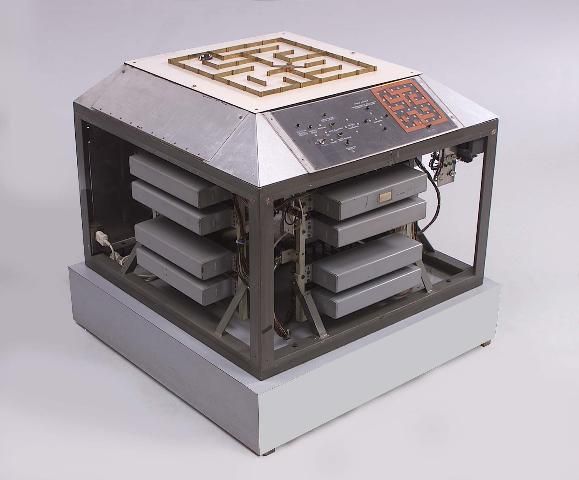
Now in the Vienna Technical Museum.
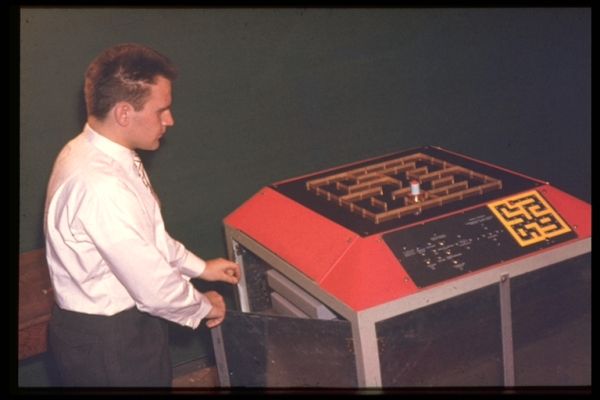
Period photo showing Richard Eier opening the covers of the Labyrinth.
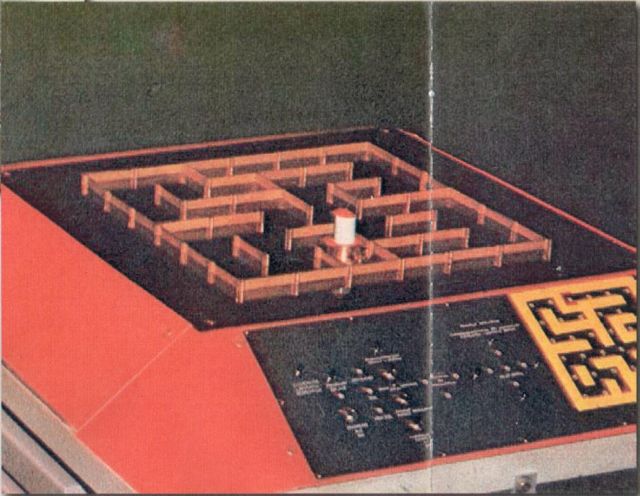
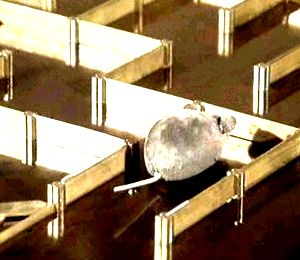
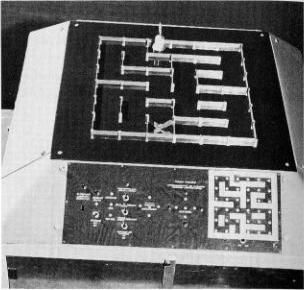
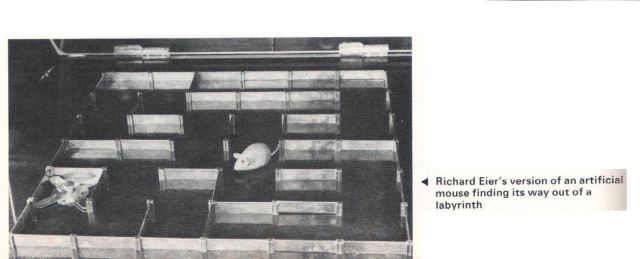
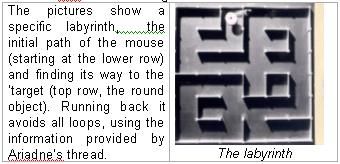
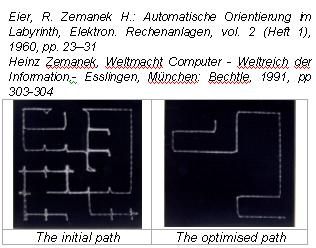

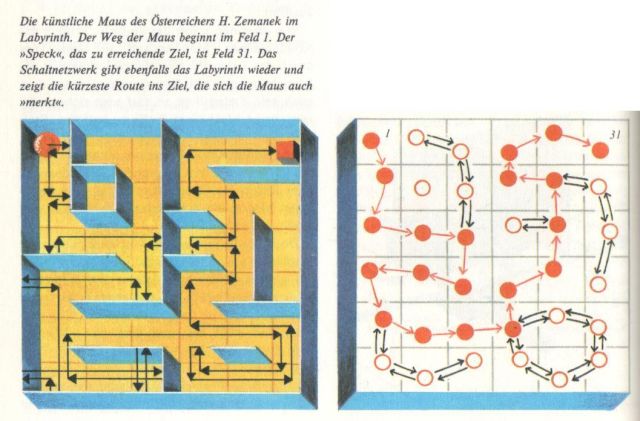
Zitat: Gerhard Chroust, "Cybernetic Animals at the Technical University of Vienna" , in IFSR Newsletter, Vol. 18, Nummer 2, Seite(n) 2, 1999
CYBERNETIC ANIMALS AT THE TECHNICAL UNIVERSITY OF VIENNA
G. Chroust
Around 1960 Cybernetics was the path into the future. Numerous cybernetic machines, usually names after animals were being constructed to study phenomena of artificial intelligence.Claude E. Shannon built a maze-solving mouse to study a labyrinthian problem – telephone switching systems: A call must make its way to its destination by the shortest possible path. The device contains a maze with fences that could be arranged to create various paths. The finder, built as mouse named ‘Theseus’, is moved by a magnet. It gropes its way from field to field and stores the direction, if it is possible to step on a field. If there is a wall, it will turn around and will try the next direction. Unless the mouse comes in a loop it will find the goal. It escapes from a loop through a pedometer which counts to the highest possible number of steps. The way from the entrance to the goal is stored in form of the direction in which the mouse left the field. One can put the mouse everywhere in the maze, it will follow the stored direction to the goal. Only if it comes to a new field or if the maze is changed, it will use a search algorithm, otherwise it will use the stored information.
At the Technical University of Vienna Richard Eier, one of the assistants of Heinz Zemanek re-build the maze-solving mouse around 1959. He improved Shannon’s method by applying the idea of Ariadne’s thread. The mouse marks each field with the path information, using the concept of Ariadne’s thread. When winding up in a dead end it retraced, duplicating Ariadne’s thread: Whenever the mouse finds an exit from field where one tread leaves and another returns, it recognises a dead end. Similarly the mouse is able to detect circles in its path.
Richard Eier studied Schwachstrom-Technology at the Technical University of Vienna. As a thesis he built 1958 Under the auspices of Professor Dr. Zemanek his "mouse in the Labyrinth," by the automated search in a way Free plug a maze learning through success and failure simulated. The idea is to C. E. Shannon, The 1952 is one of the labyrinth to solve problems presented. Richard Eier developed their own ideas and visited the search algorithm with a virtual Ariadne-
Silly, so that at the end Both the successful way From start to the target as well as the Back shortest recorded. In the following
Years ago, the "mouse in the maze" A Vorzeigeobjekt for Vienna Kybernetischen models of Heinz Zemanek. It was in Austrian And several German television Demonstrated and was star guest at the "Micro Mouse Maze Contest "of the Euro Micro You, dear readers, some high points in life's work
My father and his father's doctor friend Mr. Em O. Univ .- Prof. Ing. Dr. Richard Eier to make is special to me Honor and joy. Galt my admiration of his first "in the mouse
Labyrinth "and his juggling with matrices, but soon outshined its people love everything. Professor Eier is Enabler, An individually Fördernder, he often appears modest in the background and waives his rightful glory. His scientific work has weight, shine through precise wording And the highest quality. On this basis is reliable today.
Richard Eier: Gedächtnissteuerung zur Orientierung in einem Labyrinth. Staatsprüfungsarbeit am Institut für Schwachstromtechnik der Technischen Hochschule Wien. Wien 1958.
[Mnemonic Control in a Maze] Diploma thesis of Richard Eier. [ Unfortunately I do not have a copy of this document].
Automatic Path-finding in the Maze – R. Eier and H. Zemanek [ Automatische Orientierung im Labyrinth ] – pdf in German – no English translation.
It may not be obvious to readers that in implementing Ariadne's Thread, the mouse can escape the maze on the shortest path out by following the "thread" just "laid". Other maze solvers are placed at the start and stop at the "cheese". A re-run of these mazes are all from the start position.
Selected images from my visit in June 2009 with David Buckley [Photos by Reuben Hoggett and David Buckley]
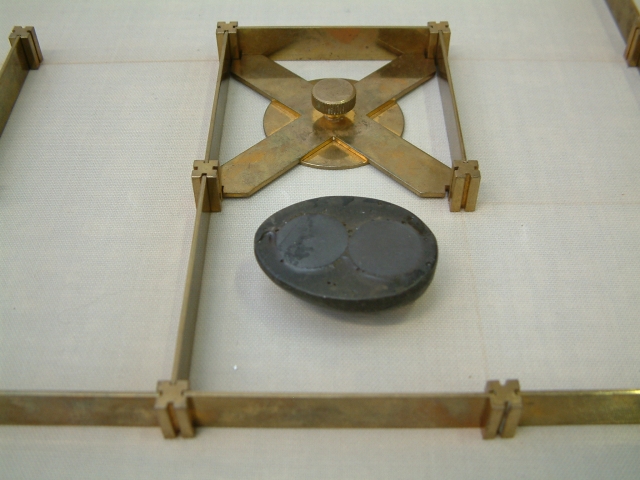
Underside of mouse showing two imbedded magnets. Above it is the re-locatable goal (i.e. the "cheese").

Eier's Labyrinth now operated by a microprocessor – the relays are bypassed.

Front panel – detail.
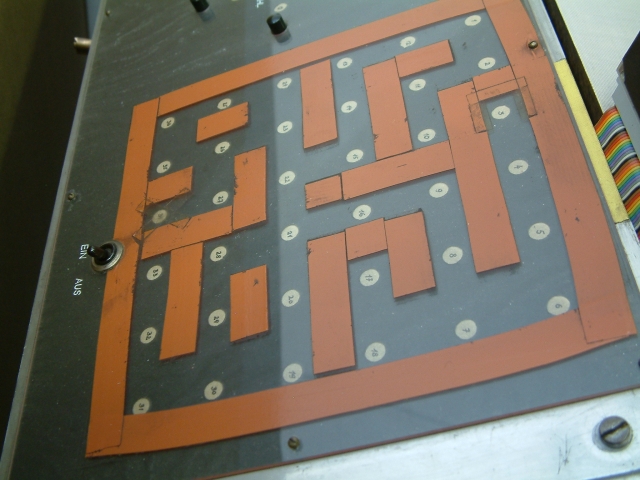
Front panel outlining configured maze layout.
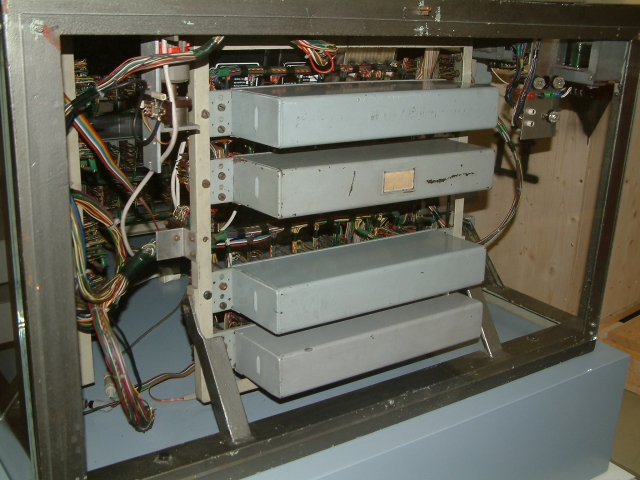
External relay covers.
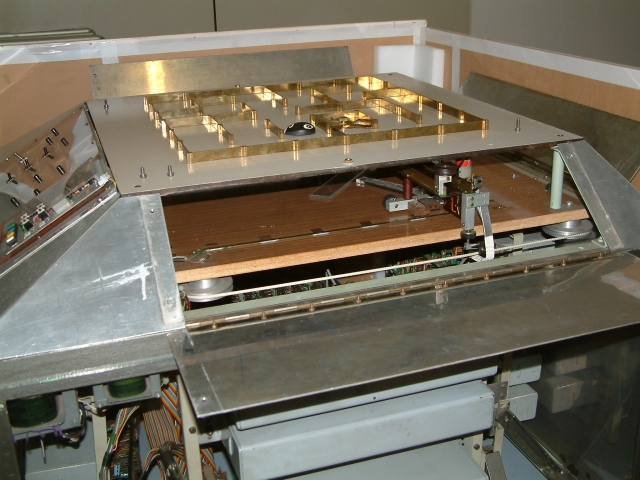
Carriage mechanism.
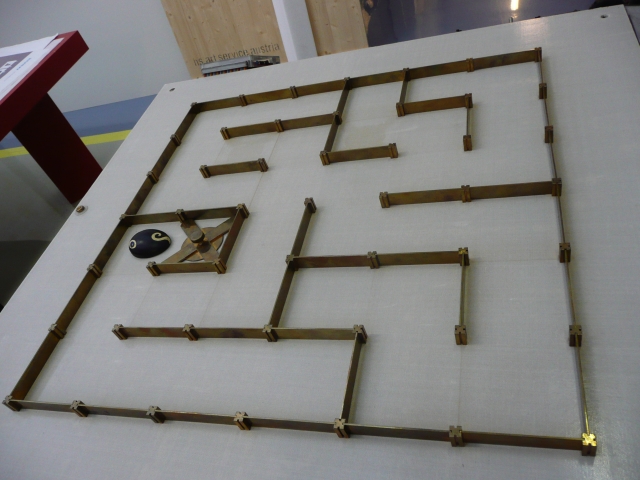
Table-top with maze and mouse.
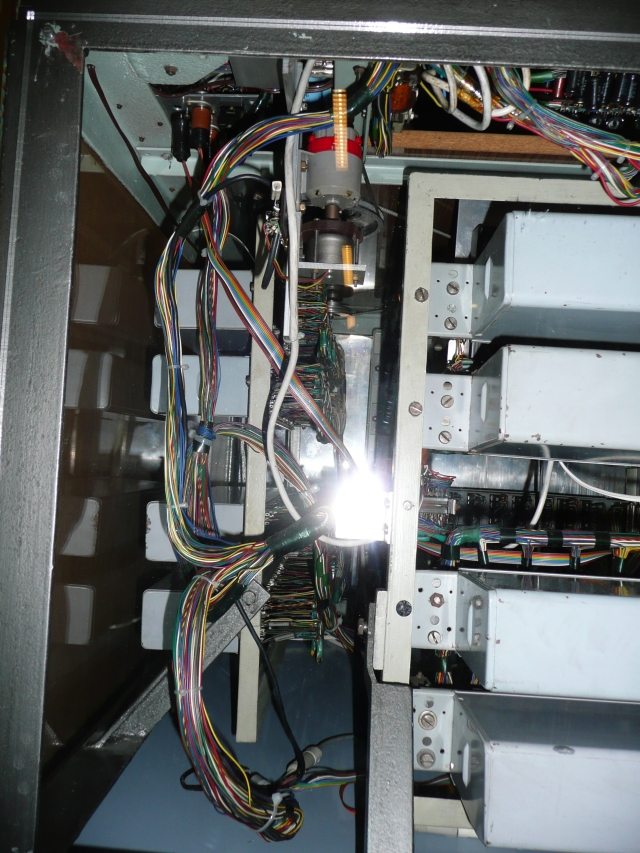
Internals showing one of the carriage motors.
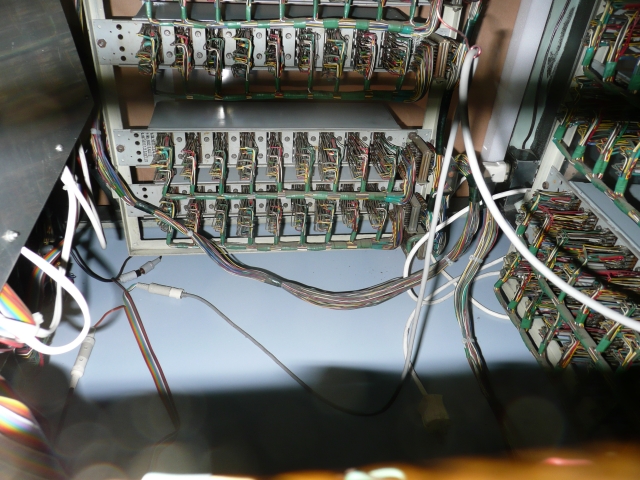
Internal photo showing the wiring of the relays.

Thanks to Heinz Zemanek, and also Peter Schoen and Dr Otmar Moritsch of the Vienna Technical Museum who allowed David and Imyself to study and photograph the Labyrinth, June 2009.